By Raymond Saw
So among the numerous headlines about and the new taxes on all of us that were on our newsfeeds this week, unless you’re an environmentalist or an East Malaysian, you might have missed this headline:

Screenshot from Malaysiakini
Well okay, so another dam is being built, what’s the issue? The issue is that it , when the Papar Dam was first announced. Over 500 people turned up at the site of the future dam to protest the project, for reasons which we’ll go into detail later in the article.
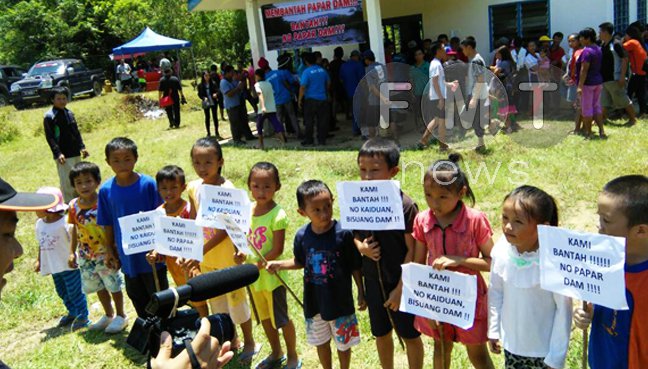
Kids at the recent Papar Dam protest. Image from Free Malaysia Today
[UPDATE 15/8/2019]: In their continued effort to stop the Papar Dam from happening, Orang Asal folk from Sabah led by the group Taskforce Against Kaiduan Dam (TAKaD) will be looking to hand over a memo to the Prime Minister himself as well as other federal ministers. According to a press release from TAKaD, they will be in Putrajaya on the 4th of September to pass the memo to them.
*Original article continued below*
But for now, let’s first try to explain what the Papar Dam is all about in the first place.
The Papar Dam comes after the cancellation of a previous megadam plan
Okay so the Papar Dam is not that crispy thing you eat your banana leaf rice with. Instead, it’s actually a dam for holding water that’ll hopefully solve
See, Sabah is actually having a pretty rough time trying to maintain enough water supply for the growing population. It has been claimed that Sabah’s current water supply capacity is As such, the Sabah Chief Minister Shafie Apdal has decided upon building the Papar Dam as a solution.
“We need a dam because we believe that there will not be ample supply of water in Kota Kinabalu within five to 10 years. We don’t want to wait for the time when the current shortage (of water) is 15 per cent, so (if) we don’t resolve that, it’s not going to be good for everyone,” – Shafie Apdal,
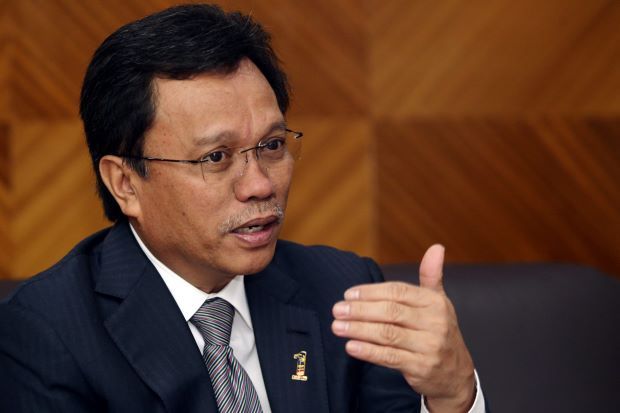
Sabah CM Shafie Apdal. Image from mStar
But here’s the thing tho: before GE14, the dam that was supposed to have been built was the . And many people – including Shafie and his party Warisan –. During the lead up to GE14, it seems as tho one of their campaign promises was in fact to, which … only for the Papar Dam to be announced later on.
This has led to criticism over Shafie’s actions, with Sabah’s opposition and making a u-turn on the Kaiduan Dam project.
“They pledged to stop the project if Warisan came to power after GE14. Now just a few months in power, there is this U-turn… It is essentially the same project, only a change in name from Kaiduan Dam to Papar Dam, and a change in location along the same river,” – PBS sec-gen Datuk Johnny Mositun,
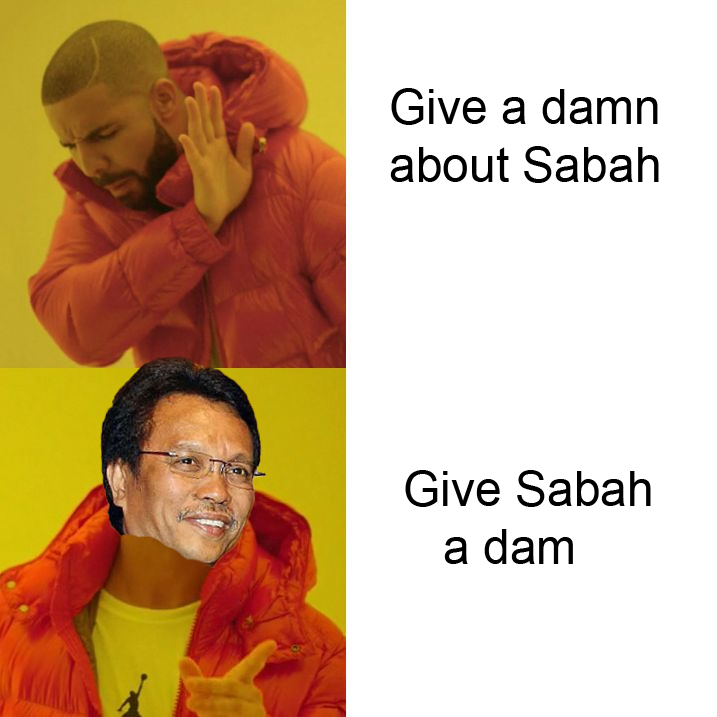
Papar Dam memes for Sabahan teens.
Of course, like we’ve mentioned earlier, Sabah does kinda need to think about its impending lack of water, so Shafie hit back at PBS, arguing that…
The Papar Dam would apparently affect less people than the Kaiduan Dam
Now the state govt wouldn’t just simply pick a random location to built a dam laa kan (we hope anyway), and so there must be a reason behind the proposal of the Papar Dam. We know that , but why in Papar?
According to State Infrastructure Development Minister Datuk Peter Anthony said that among the reasons why they ditched the controversial Kaiduan Dam and went for the Papar Dam is that the
On top of that, Peter claims that in the new project, only The new dam is also set to be than the previous plan, plus the
“By constructing this dam, it would supply 700 million cubic meters. Bear in mind that Papar Dam is not the (controversial) Kaiduan Dam as its construction will not reach Penampang. Work is expected to commence end of this year or early next year, once the design and build of the project including its development plan which are currently being prepared, are completed,” – Peter Anthony,
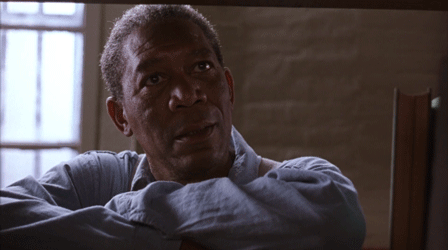
Even he seems surprised at how good the Papar Dam sounds.
Of course, like we’ve mentioned earlier, Sabah does kinda need to think about its impending lack of water, so Shafie hit back at PBS, arguing that…
The Papar Dam would apparently affect less people than the Kaiduan Dam
Now the state govt wouldn’t just simply pick a random location to built a dam laa kan (we hope anyway), and so there must be a reason behind the proposal of the Papar Dam. We know that , but why in Papar?
According to State Infrastructure Development Minister Datuk Peter Anthony said that among the reasons why they ditched the controversial Kaiduan Dam and went for the Papar Dam is that the
On top of that, Peter claims that in the new project, only The new dam is also set to be than the previous plan, plus the
“By constructing this dam, it would supply 700 million cubic meters. Bear in mind that Papar Dam is not the (controversial) Kaiduan Dam as its construction will not reach Penampang. Work is expected to commence end of this year or early next year, once the design and build of the project including its development plan which are currently being prepared, are completed,” – Peter Anthony,
The people aren’t convinced, and want the state govt to consider other solutions
Alright so going back to the Papar Dam protest we mentioned at the start, it appears as tho a major reason for the unrest is that the people are unimpressed with how the state govt handled the situation.
According to the protest’s organiser Michael Frederick, the state govt. He claimed that the with environmental impact assessments done along with state govt officials meeting with villagers for dialogues. The new dam however was proposed, leading to some raised eyebrows.
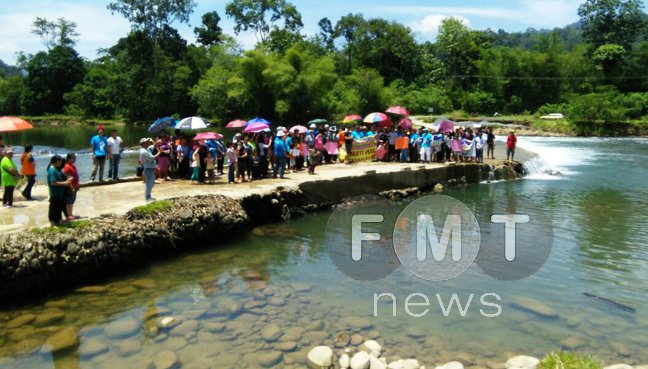
Protesters gathering at the protest site against the Papar Dam. Image from Free Malaysia Today
On top of that, many seem to be unconvinced about the state govt’s claims that only 200 people will be affected, with some such as
“This new dam that Anthony has proposed is even worse than the previous Kaiduan Dam, even if it is smaller in size. The same river is affected and, because of its location, more people will have to be relocated,” – Michael Frederick,
And in fact, remember that Sabah water crisis we mentioned earlier? Well it seems as tho a dam might not have been needed to fix it in the first place, according to water and energy expert Adrian Lasimbang.

Adrian Lasimbang. Image from Roketkini
that Sabah has a high amount of rainfall throughout the year and that it’s misleading to say that a dam is crucial. Meanwhile, reporter Kenny Gotlieb, who , told us that roughly half of Sabah’s water system is lost to ‘non-revenue sources’, which means that more water can reach people if existing infrastructure is improved.
We know this may just seem like people not happy that something everyone needs will be placed at an inconvenience towards them, but this is actually a pretty major issue because it’s not the first time a dam for water has caused trouble for the locals in Sabah.
Locals affected by a previous dam years ago still feel the effects of it today
Over twenty years ago, the Kadazandusun indigenous community of Kampung Tampasak, Sabah found themselves in a similar situation to that of the people in Papar. The of their ancestral lands in 1994 and 1995 to make way for the Babagon Dam, built to increase Sabah’s water reserves which coincidentally would

Baba Wayne gone :(
The Babagon dam, while benefiting the people of Kota Kinabalu, Putatan and Penampang, drastically changed the lives of the community that found themselves resettled for the dam. Their traditional long house for example were gone, and the In fact, they still have trouble even today, with the to fix their village’s community center.
As for the issue of the Papar Dam tho, it’s kinda clear that while the Sabah govt sees the dam as a way to solve their water issues in the long run, the locals are unhappy with the prospect of having to move and resettle. You wouldn’t want to have to move from your hometown just for city folk to have a shower right? Shafie himself knows that and has already for all those involved in the Papar Dam, but it remains to be seen if there can be a win-win solution in the end.
We guess it really is a case of… damned if you do, damned if you don’t.
Source:
Related to SDG 7: Affordable and clean energy and SDG 10: Reduced inequalities



